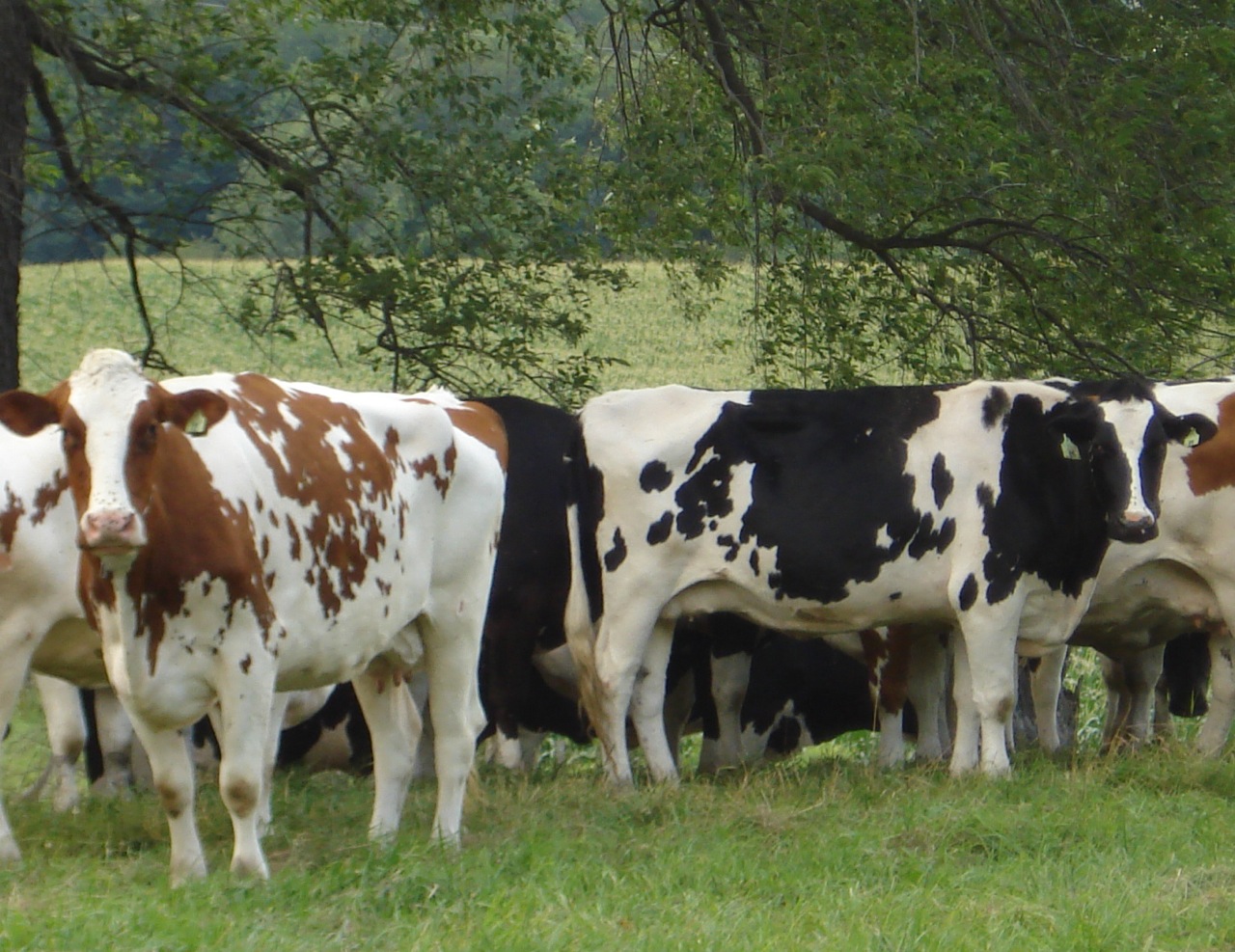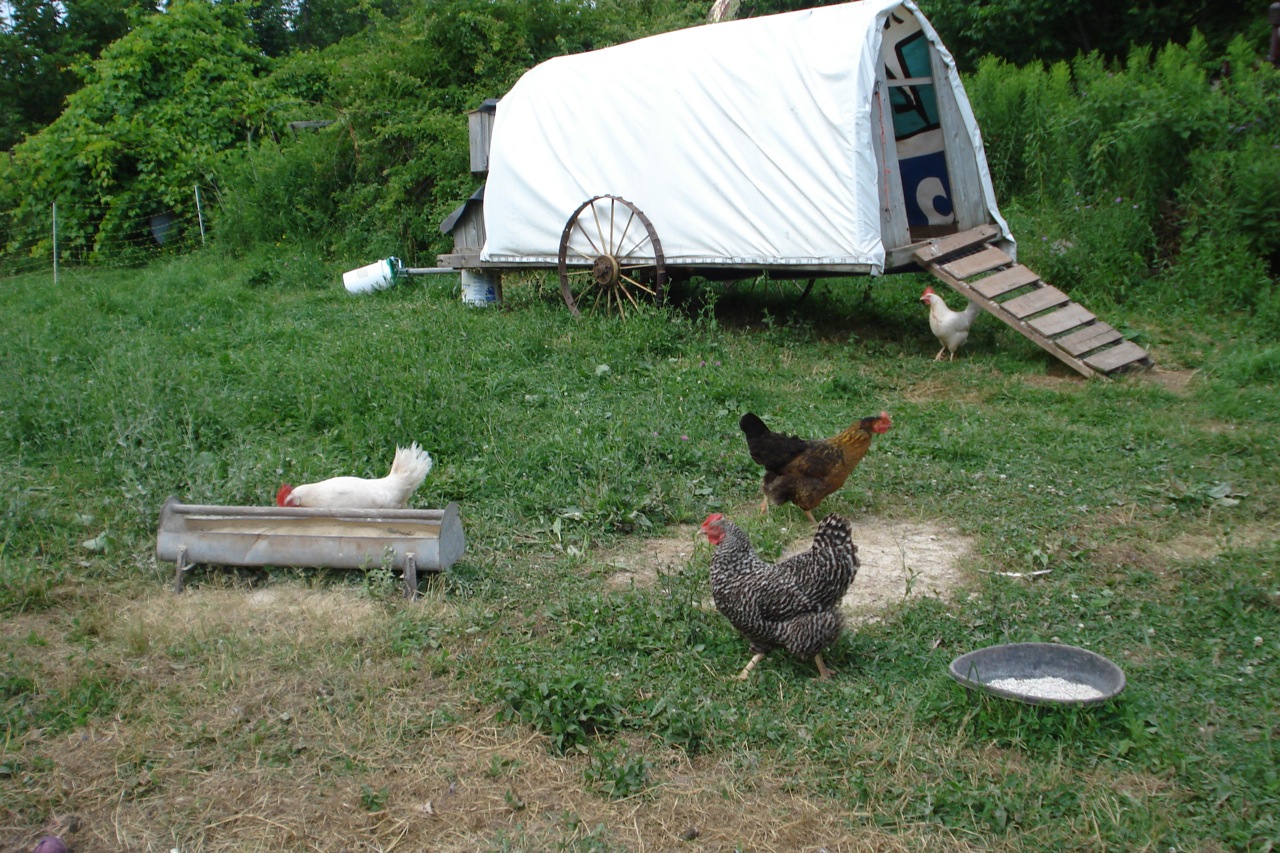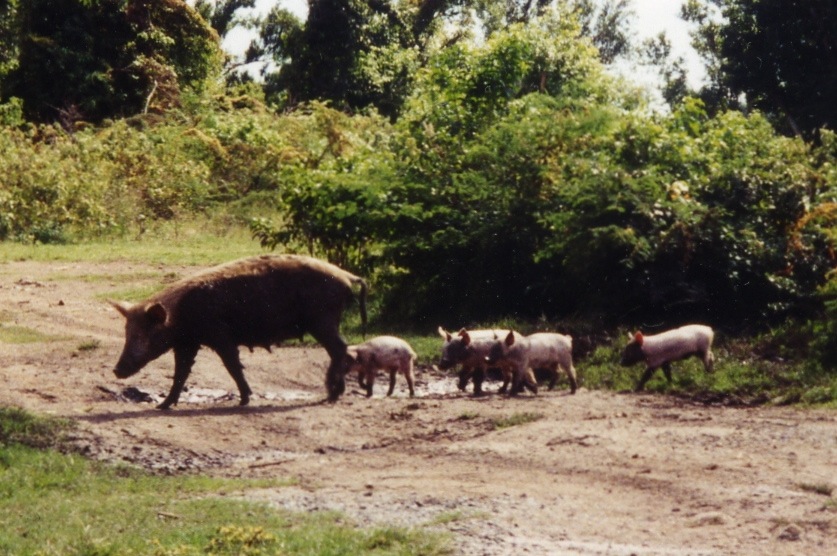Having been a vegetarian the past 13 years, I’m familiar with the many valid, ethical and environmental reasons to avoid supporting the meat industry. While I realize this topic is sensitive to many, personally, I’m beginning to understand that I don’t have to be completely exclusionary in order to uphold my ethical values – especially in light of newer options. That being said, this page is dedicated solely to nutritional points of view.
Before I outline the health benefits of high quality meat, it’s probably a good idea to note that individual needs vary, and you’ll have to decide for yourself, where you stand in regard to meat consumption….
~ Some are eating more meat than is good for them & should consider cutting it back a bit.
~ Some do better, health-wise, without any meat at all.
~ Some who avoid meat altogether, might be better off adding it to the mix every now & then.
~ And this little piggy went weeweeweeweewee all the way home….. 😉
___________________________________________________________________________________
BEEF
These days, many health conscious people try to avoid eating red meat, as it’s been called out as one of the major culprits in heart disease and cancer. That may be true, but perhaps we need to come up with a different name for it, as the majority of “meat” at the grocery store, is more like a faded memory of something else.
If you take a normal animal, living a normal life, eating a normal diet, and turn it into food – you get normal meat – real meat (the stuff our ancestors ate for millions of years without the existence of cancer or heart disease).
Now, if you take that same animal, start mass-producing it, raise it in an unnatural setting, engineer it with hormones so that it grows 4 times faster than normal, deny it its natural food source, and fatten it up on something it was never meant to eat, well then, sure, I can see how meat like that can cause quite a few “people problems” – including cancer and heart disease. I can see why people are advised not to eat it.
The unfortunate part of this scenario though, is the fact that “meat” itself is called out as the bad guy, when it’s actually very good, provided it’s the real deal.
A cow is a cow. This is not build-a-bear workshop here. Let a cow be a cow. (For goodness sake!)
When animals are controlled & manipulated this way, their bodies change, their meat changes. Certain animals were meant to roam on and consume fresh, green, grass. When they’re forced to live strictly on grains (& other random “feedstuff”), in crowded, unhealthy conditions….things happen
______________________________________________________________________________________

Compared to grain fed, GRASS-FED BEEF is….
~ lower in total fat (which makes it lower in calories). Switching to grass-fed meat will save the average meat-eater 17,733 calories per year. This means, without making any other changes in your diet or lifestyle, you’ll lose 6 pounds a year. That’s not bad considering there’s no willpower involved – Just swapping grain-fed for grass-fed.
~ 4 times higher in vitamin E. That’s a good thing, considering many Americans are deficient in it. Vitamin E (which is also a potent antioxidant), lowers the risk of both heart disease and cancer, and also has been shown to contain various anti-aging properties.
~ 8 times higher in beta-carotene, which is very protective for both the skin and eyes. It’s also been shown in many studies to protect against various degenerative diseases, including heart disease and cancer.
~ higher in B-vitamins thiamin and riboflavin, which assist in: energy production (turning carbs into energy), good digestion (helping to metabolize protein & fat), brain/nervous system function (helps memory & mood), and skin, hair, & nail health (skin/hair/nails are constantly growing & renewing – deficiency in B vitamins can cause things like hair shedding, dermatitis, wrinkles, acne, rashes, dull/grey skin, & weak/splitting nails.)
~ higher in calcium, magnesium & potassium, which are so important to bone and heart health (among other things…)
~ higher in total omega-3s (health benefits outlined on “fish” page)
~ has a better ratio of omega-6 to omega-3, which is linked to lower risk of cancer, heart disease, diabetes, obesity, and mental disorders. Most people in the US have too much omega 6 & not enough omega 3.
~ between 3 & 5 times higher in CLA (conjugated linoleic acid). This is great news, as the type of CLA that’s in grass-fed meat and dairy (there are actually 16 different kinds of CLA, each with its own set of health benefits) is showing great promise as one of the most potent, cancer fighters around. Nice!
~ higher in vaccenic acid (which can be converted into CLA within the body)
~ lower in the types of saturated fats linked w/ heart disease
~ extremely less likely to contain the dangerous E.Coli bacteria. The National Academy of Science reports as many as one out of every three cows may carry the deadliest strain of E. Coli (this doesn’t mean that everyone who comes in contact with it becomes ill – only those with weakened immune systems who can’t fight it off). Luckily, these statistics don’t apply to grass-fed cattle.
www.americangrassfedassociation.org/FAQs
www.eatwild.com/healthbenefits
www.csuchico.edu/grassfed/researchliteraturecomplilation
www.americangrassfedbeef.com/healthbenefits
www.motherearthnews.com/grassfedmeat
_____________________________________________________________________________________
So, it could be true, that some problems associated with meat consumption have more to do with where “modern meat” comes from, and less to do with real meat – the way it was before we started messing with it so much.
Grass-fed beef is becoming more & more available these days if you look for it, and for many, is a perfectly healthy food, in moderation.
Sally Fallon, in her book Nourishing Traditions, has a nice paragraph on the merits of red meat….
“Red meat is an excellent source of both macro & trace minerals, particularly zinc & magnesium. In meat, these minerals exist in a form that is much easier for the body to break down and utilize than the minerals in grains and beans. Red meats are rich in vitamin b12, so important for a healthy nervous system and blood; and in carnitine, which is essential for healthy functioning of the heart. Beef and lamb fat contain fat-soluble vitamins and small amounts of essential fatty acids, especially if these animals have been allowed to graze on green grass. These fat-soluble vitamins are what your body needs to utilize the minerals in all foods. In animal studies, beef fat has a cholesterol-lowering effect. Lamb and beef fat are rich in conjugated linoleic acid (CLA), which has strong anticancer effects; and both lamb and beef fat contain palmitoleic acid, which protects us from viruses and other pathogens.”
Beef, of course, is also a good source of protein and heme iron (the most absorbable kind of iron you can get from food). Keep in mind however, that one of the problems associated with over-doing red-meat is the fact that too much heme iron can be irritating to the lining of the colon (increasing the risk of colon cancer if consumed too frequently over a long period of time). This is one example of why, even healthy foods need to be eaten in moderation.
________________________________________________________________________
In reference to organic beef, see my “organic foods prioritized” page.
___________________________________________________________________________________
A WORD OF CAUTION: Grilling meat over an open flame is not the best way (health-wise) to cook it. When meat and meat fat come into contact with an open flame, certain undesirable substances are formed – heterocyclic amines (HCAs), polycyclic aromatic hydrocabons (PHAs), and advanced glycation end producst (AGEs). Two of these substances – HCAs & PHAs – are potent carcinogens (PHAs are actually what’s used to induce cancer in lab animals). AGEs increase risk of heart disease, diabetes, & kidney disease. When cooking meat at low to moderated temperatures in a pan or in liquid, relatively few of these substances are formed. That being said – it’s a good idea to eat grilled meat less frequently, but no need to eliminate it entirely…..
A LOOP-HOLE for BBQ grilling….When you do fire up the grill, be sure to eat plenty of antioxidant rich foods with your grilled meat, as studies have shown that eating green vegetables such as spinach, broccoli, cabbage, brussels sprouts; fruits such as blueberries and cherries; as well as drinking red wine, will protect the body from the damage caused by excessive heat and open flames. Even when eating oven-cooked meat, choosing some of the above mentioned side dishes (as opposed to potatoes) is a good idea as well.
Enjoy grilled meat when taking into consideration a few easy (& tasty) preparation guidelines.
~ Trim the fat off of the meat before you grill it, as PHAs are formed when the fat drips onto the heat source, causing excessive smoke to surround the meat.
~ Always avoid charring your meat (don’t eat the black/brown parts). This type of over-cooking is what creates HCAs, and they’re most concentrated in the blackened part of the meat. Just give it a quick cook – lightly seared – rare to medium-rare is best.
~ Cook smaller pieces of meat which call for a shorter cook time – giving harmful substances less time to form.
~ Use generous amounts of spices (which are loaded with antioxidants) as either a dry rub, or included in a juicy marinade. Virtually any spice will help to protect meat – both the cows & yours =) – but in case you’re curious, the following spices are the most potent – cloves, cinnamon, Jamaican allspice, apple pie spice, oregano, pumpkin pie spice, marjoram, sage, thyme, gourmet Italian spice. (Not that anyone wants their steak to taste like apple pie – or do they!?)
~ Marinating meats before grilling can reduce HCAs by an enormous amount (up to 90% according to some experts). Also, using something acidic in the marinade, like vinegar or lemon juice will reduce the amount of AGEs as well.
www.journalofagriculterandfoodchemistry/whenredmeatmeetsredwine
www.theamericanjournalofclinicalnutrition/addingantioxidantrichspicestomeat
www.mercola.com/addingspicestomeat
www.foodnavigator.com/addingspicestomeat
www.oxfordjournals.com/greenveggies&meat
_______________________________________________________________________________
LAMB
Lambs are young sheep (less than 1-year-old).
The benefits:
~ Lamb is more likely than beef to have been grass-fed, but double-check your source. Same long list of benefits pertaining to grass-fed cows applies here – see above.
~ Lamb is high in protein and low in calories. It also contains good amounts of selenium, vitamin B-12, niacin, zinc and phosphorus. These nutrients help to maintain our immune system (zinc), protect the heart (B-12), turn food into energy (B-12), and protect against Alzheimer’s & cognitive decline in general (niacin).
________________________________________________________________________________
POULTRY
Free-range poultry is another high quality protein source.
Chicken contains many minerals, including calcium, magnesium, zinc, iron, and the powerful antioxidant/cancer fighter – selenium. Turkey is also a good source of selenium, as well as niacin, vitamin B-6 and CLA. (And by the way, it’s not turkey – or its tryptophan – that make you sleepy on Thanksgiving. That post Thanksgiving-day-meal coma is simply due to the fact that we ate too darn much. Blood rushes from our heads to our digestive tracts to help w/ the over-load. That’s when we turn into mush on the couch.)
Not too many people realize that the European Union has banned the import of all US poultry since 1997. Despite periodic pressure from the US to lift the ban, it’s still in place more than a decade later. Why? It’s standard practice in the US poultry industry to wash the carcasses in chlorinated water to kill bacteria. European health authorities aren’t convinced it’s safe to ingest the small amounts of chlorine that remain on the meat, and agreed, once again, in 2008 when it came up, that lifting the ban would “threaten the community’s entire set of food production standards.” John Bowis from the UK went one step further, telling reporters that “lifting the ban would be “outrageous” and would degrade EU citizens to the status of “guinea pigs.” Unfortunately, millions of US citizens are unknowingly playing that role.
www.meatprocess.com/EUbanremainsonUSchicken
I suggest purchasing high quality, pasture raised birds (directly from local farms if possible).
I try to refrain from bringing ethics into the picture when talking about nutrition, but to me, they’re not completely separate issues, as poor ethics practices translates directly into unhealthy meat. Commercially raised chickens are unfortunate creatures indeed. Although it was out of the question for quite a while, at this point in my life, I’ve come to terms with the idea of eating meat – BUT – from an animal that actually lived. 5 weeks of pitch-black imprisonment, manipulation, and torture is not something I want to be a part of, & not something I want in me – no thanks.
______________________________________________________________________________
EGGS
Although we’ve been led to believe otherwise for many decades, the Harvard Medical School Guide to Healthy Eating reports that “No research has ever shown that people who eat more eggs have more heart attacks than people who eat few eggs.” (p. 75)
Similarly, the US National Library of Medicine reports in a 1999 study – “We found no evidence of an overall significant association between egg consumption and risk of coronary heart disease or stroke in either men or women.” They actually found that those who ate 5 – 6 eggs per week had a lower risk of heart disease than those who ate less than 1 egg per week (see link below for details).
It’s interesting how one bad headline can become ingrained into society, so much so, that 50+ years later, it’s still being carried around in our brains somehow. Remember in the old days, when school teachers made a mis-behaving child write on the blackboard “I will not pull Susie Smith’s hair” over & over, a hundred times. Something like that might help us here. “Eggs are good. Eggs are good. Eggs are good….” They really are, and here’s why….
~ Eggs contain the highest quality protein on the planet, consistently scoring higher than beef, milk, whey, & soy. It also happens to be the least expensive animal protein out there. The incredible, edible.
~ Eggs are good food for the eyes. Egg yolks are the most bio-available, richest known source of lutein and zeaxanthin – 2 important nutrients known to effectively protect the eyes from “macular degeneration” (the leading cause of blindness in people over 55). (Bio-availability simply refers to nutrients in a form the body can recognize and utilize immediately. Some nutrients pass right through us, unused, which would make them “bio-UNavailable” – though don’t know if that’s a real word!)
~ Eggs are good food for the liver. Due to its choline content, egg yolks help to prevent the accumulation of cholesterol and fat in the liver (how ironic, as people tend to avoid eggs – [and the yolk in-particular] under the assumption they cause this type of cholesterol accumulation).
~ Eggs are good brain food. Again, due to their choline content, eggs enhance brain function, boost memory/thinking capacity, and help to protect from certain types of dementia.
A 2007 study published in Mother Earth News showed the following differences when comparing eggs from pastured chickens, to those from commercially raised.
Eggs from pasture raised chickens have…..
~ 1/3 less cholesterol
~ 1/4 less saturated fat
~ 2/3 more vitamin A
~ double the omega 3 fatty acids
~ 7 times more beta-carotene
Additionally, according to eatwild.com, eggs from pastured chickens contain 3 to 6 times more vitamin D than eggs from commercially raised chickens. They also contain higher quantities of vitamin B-12 & folic acid.
You’re most likely to get the best quality (& tastiest) eggs directly from a family farm, at farmers markets, or at your local health food store.
_______________________________________________________________________________
WILD GAME
Wild game are those animals that can be hunted for food. This generally includes venison, buffalo, elk, caribou, and game birds like wild duck, wild turkey, goose, pheasant & quail. All these animals are good protein sources, and have the same benefits listed for grass-fed beef, because of course, they live a natural, normal life, out in the fresh air, surrounded by nature.
We have a good friend who hunts animals of all shapes & sizes, including rabbit & squirrel. Never killed an animal he hasn’t eaten. He does all the processing himself, from beginning to end, and I have to say, I’m both amazed & grossed out by it. Queasiness aside, I have enormous respect for this system (& for him), as ultimately, it’s the most normal way to get meat if you really think about it (as opposed to that tidy, little styrofoam package at the store – One could easily forget what it is their eating & take it for granted). There must be a genuine appreciation and gratefulness that goes along with it. I was really taken when I heard my friend say that tears come every time. I used to think of hunting as a macho thing, but it’s not necessarily so.
Kudos to you Norm, but I’m still not letting you take care of our pet gerbil while we’re on vacation 😉
___________________________________________________________________________________
PIG
Maybe not so much. This one is a bit controversial, but here’s some information I can share to help you make your own decision on how often, if at all….
~ Pigs are scavengers which means they’ll eat anything, including garbage, rotting carcasses, their own feces….(etc).
~ Pigs are also notorious for being infected with parasites & tapeworm, simply because they spend most of their lives rolling around in poop. Most people who cook pork know (I hope) to cook it very thoroughly to ensure all the worms & parasites are killed off (can cause trichinosis if not cooked well enough).
~ Nitrates are bad. Sometimes referred to as nitrites, or sodium nitrite, this is a meat preservative used in hot dogs, sausage, bacon & luncheon meats. It’s very clear that nitrates are potent carcinogens (substances that cause cancer). Of course, unprocessed meat is best, but if this news makes you sad because you love hot dogs/sausage/bacon/cold-cuts – don’t fret! Visit the following link for nitrate free versions of these foods. They also come pork free if you prefer (turkey bacon, chicken/apple sausage, beef hot dogs…etc). You can usually find them at your local health-food store, or perhaps your regular grocery store will pick them up if they get enough requests.
www.applegatefarms.com/companypromise
~ According to health expert Sally Fallon, “Investigation into the effects of pork consumption on blood chemistry has revealed serious changes for several hours after pork is consumed.” AND “In the laboratory, pork is one of the best mediums for feeding the growth of cancer cells.”
~ On a more positive note, there are certain groups noted for longevity (like the Okinawans) who eat pork and lard (pork fat) on a daily basis. It’s thought (but not known for sure) that the preparation techniques (such as using vinegar to ferment the pork before consumption) accounts for their lack of problems with this food.
www.americaljournalofclinicalnutrition.org/bacon&bladdercancer
www.organicconsumers.com/nitrates&cancer
If you do decide to include pork, ham & ribs in your diet, I’d recommend seeking out local farms who raise healthy, pastured pigs.
_________________________________________________________________________
The following website is a great resource to help you locate high quality animal products in your area:
www.eatwild.com/findlocalfarms
_________________________________________________________________________
Believe it or not, I actually took that pig picture myself, on honeymoon in St. John where all sorts of animals just roam around free. We were just driving down a dirt road & our jaws dropped when that came into view. Cute little family. Those chickens are lucky enough to reside at Old Path Farm, and they provide us with our eggs (thank you chickens & OPF). The wild turkeys – mama & babies – (click photo to see the little ones) just happened to be roaming around our backyard one day =)
_____________________________________________________________________________________














